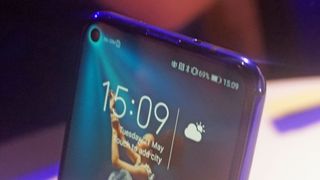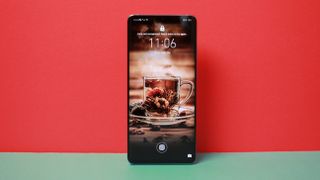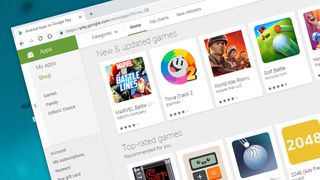Update: The latest moves in the issues surrounding Huawei see the brand losing relationships with more brands, as well as seeing retailers refuse to stock the phones. However, more details emerge about the possible Google Play Store rival and Huawei pledges to find a way around the chip issues,
Huawei has found itself at the center of a global tussle between the US and China after Trump's administration placed the brand on the ‘entity list’, limiting the business US brands could do with it.
That led to Google blocking Huawei’s future access to Android updates, UK-based chip designer ARM has ceased all activities with the brand and multiple retailers and networks around the world to stop dealing with it for fear of sanctions from the US government.
While there has been a slight reprieve - on May 20 the US Commerce Department issued a temporary license for Huawei to work with businesses in the US, meaning US companies can resume their partnerships with the brand.
However, this only lasts until August 19 and it's unclear how Huawei will be able to gain the full license to work with US brands while the government considers it a threat to national security - and it hasn't seemed to lead to a rekindling of efforts from companies like Panasonic or Microsoft.
So it seems, for now, that this is nothing more than a delay to a hugely difficult time for Huawei and in a few months the brand will no longer be able to offer access to crucial Google apps or gain access to vital technologies.
The company has already seen growth slow in the month of April as the ban began to cast a shadow, but since other brands have pulled out of relationships with Huawei, it's expected that May offer even worse results.
However, Huawei's founder Ren Zhengfei maitained a positive outlook for the brand, stating: “We will certainly be able to continue serving our customers. Our mass production capacity is huge, and adding Huawei to the Entity List won't have a huge impact on us. We are making progress in bidding worldwide,” Ren said.
Perhaps the most useful piece of information about current Huawei phones is Google's statement issued to TechRadar:
“We are complying with the order and reviewing the implications. For users of our services, Google Play and the security protections from Google Play Protect will continue to function on existing Huawei devices,” a spokesperson told us.
That's good news if you’ve just spent large amounts of money on a Huawei P30 Pro: as alluded to above, current devices from the Chinese brand will continue to get security updates and access to the Play Store for the foreseeable future, as Google has promised not to leave those out in the cold.
The temporary lifting of the ban will also allow the brands to prepare better Android support for current and future models, meaning that Huawei will be able to do bueinsess as it has been for a little longer - so current customers will be able to benefit for longer. Google has since resumed its relationship with Huawei, to enable it to deliver benefits for longer.
Huawei has also said to TechRadar that it will continue to do all it can to support all its phones currently out in the wild, and is looking at other implications of Google's decision.
The company told us: “Huawei has made substantial contributions to the development and growth of Android around the world. As one of Android’s key global partners, we have worked closely with their open-source platform to develop an ecosystem that has benefited both users and the industry.

The Honor sub-brand of Huawei is also subject to the same constraints. Image credit: TechRadar
"Huawei will continue to provide security updates and after-sales services to all existing Huawei and Honor smartphone and tablet products, covering those that have been sold and that are still in stock globally.”
Huawei Australia has echoed the sentiment, and also claiming that “those that are planning to buy a Huawei device in the near future” will not have to worry about the sanctions, according to Huawei Australia’s Director of Corporate Affairs, Jeremy Mitchell.
We've asked for comment regarding the recent lifting of the ban, but Huawei declined to comment.
Whether this will allow the flexible Mate X to launch with 'full fat' Android remains to be seen, but that's likely to be a huge target for the brand as it's spent enormous sums marketing that model since the unveiling in February and is keen to lock in its reputation as a technological leader.
It looks like the bendable phone will, at least, be delayed though - the CEO of UK network EE said, during the launch of its 5G networks, that the brand had temporarily paused stocking the phone while it worked to understand the implications of the trade ban.
UK retailer Dixons Carphone has followed suit, halting plans to bring the 5G handset to launch as planned while the UK gears up to enter the next phase of connectivity.
So while the fact current models will be offered updates, it's unclear how long these will last for, and the fact networks are already getting jittery about the sanctions isn't going to make anything easier for Huawei.
While most smartphone brands will only honor security updates for two to three years after launch of a new handset, one might expect this to be much shorter in the case of Huawei phones, given these new restrictions from Google.

Image credit: TechRadar
The move from Google means it will no longer work with Huawei directly on issuing updates to its system, and won't give the company access to the Google Play Store. This is a potentially critical blow to the brand, which only recently spoke out about its plans to be the world's largest smartphone manufacturer.
This means that if Huawei wants to keep using the Android operating system, it will need to use the Android Open Source Platform (AOSP), which is a free platform that any brand can use as an underlying foundation for its products.
However, it along with the Google Play Store it won’t have access to the core Google apps like YouTube, Google Maps and Chrome – these are core elements of Google's business that it's not duty bound to make available to anyone.
Without access to the Play Store, Huawei would be forced to work directly with developers to get them to create versions of their wares for its phones. This situation would be similar to that of Amazon’s Fire OS, which is based on AOSP but has its own app store, as the retail giant seeks to control the platform its Fire tablets and Echo devices run on.
If Huawei does have to use AOSP, the consequences could be devastating, as access to a fully-stocked app store is crucial to the success of any modern smartphone – Nokia and Microsoft failed to make Windows Phones a viable alternative to Android and Apple’s iOS, even though both brands poured millions into developer tools and enticing the top app creators onto their platform.
However, Huawei has claimed that it's been developing its own alternative to Android for nearly seven years, calling it a ‘Plan B’ that’s ready to go should it lose access to the services listed above - naming it the HongMeng OS, and claiming its alternative operating system will be launched either at the end of 2019 or the beginning of 2020, and would work across “mobile phones, computers, tablets, TVs, cars and smart wearable devices.”
In the latest statement to TechRadar, Huawei said: “We will continue to build a safe and sustainable software ecosystem, in order to provide the best experience for all users globally,” which sounds like it already wants to generate some positive hype around its alternative OS.
However, Huawei also said it would rather continue working with brands like Google and Microsoft (whose Windows operating system runs on Huawei laptops) to offer the best experience - a sentiment it has since offered around all its suppliers, hinting strongly that it hopes to resume actions when this ban is lifted.
Huawei is also claiming that it can still create smartphones and other equipment with the components it has stockpiled, as well as creating new partnerships around the world. The brand has continued to state it believes working with international partners remains the best course of action - although has confirmed it's looking at how to manage as much as possible within its own country.

The Google Play Store is a key part of attracting users. Image credit: TechRadar.
”Huawei has been working hard on developing its own AppGallery and other software assets in a similar manner to its work on chipset solutions.” Ben Woods, Chief of Research at CCS Insight, told TechRadar. ”There is little doubt these efforts are part of its desire to control its own destiny.”
If Huawei loses access to the Google Play Store, it would take an enormous amount of investment to attract developers to create app options that would keep users of its smartphones happy – and you have to wonder whether the brand would feel it was worth continuing to make phones at all when faced with that kind of hurdle.
The same would also apply to Honor, the sub-brand of Huawei phones, in the future. Honor might have tried to distance itself from its parent company, but it’s been confirmed that it will be subject to the same sanctions.
However, the launch of that brand’s Honor 20 smartphone went ahead as planned and made no mention of the issues facing its parent company – so it’s clear that devices currently created and in the supply chain are still going to be supported in the Android ecosystem.
Since the news of the Android suspension, more details have emerged about Huawei's plans for the App Gallery on the HongMeng OS: it's been reported that the brand is offering app developers access to Chinese users, as well as financial incentives to networks to add its app portal to phones.
Developers would be able to simply and quickly tweak their Android apps to work on Huawei's platform, and theoretically have access to a huge Chinese user base - although it remains to be seen whether Huawei phones will continue to be sold in strong enough numbers worldwide for developers to update and maintain their apps.
A huge issue facing Huawei is that chip designer ARM isn't going to work with the brand for the short term. That may seem odd, as it's a Japanese-owned brand headquarted in the UK, but as its designs use US-based technology, there's a fear this could fall foul of the trade restrictions.
If Huawei can't use ARM reference designs in its chipsets, it would be incredibly difficult and costly for the brand to replace them - and it may prove to be impossible, which would cast further doubt over the future of Huawei's phone arm.
A Huawei spokesperson told the BBC: "We value our close relationships with our partners, but recognise the pressure some of them are under, as a result of politically motivated decisions.
"We are confident this regrettable situation can be resolved and our priority remains to continue to deliver world-class technology and products to our customers around the world.”
The upcoming Kirin 985 chipset is not believed to be affected, which would mean Huawei might be able to release another cycle of smartphone before the ban truly causes issues, but partners and networks are already starting to react to the US' trade license suspension.
However, the loss of ARM support might take a little longer to be felt than previously thought: Huawei has apparently been granted a permanent licence over key ARM technology from a few months ago, after it saw potential trouble ahead.
This would allow it to keep using these key chip designs for the foreseeable future in its phones, laptops and infrastructure equipment.

Image credit: TechRadar
While these sanctions don’t currently affect other brands, the message being sent is clear: global politics can have dramatic implications for the manufacturing and marketing of consumer devices that have become indispensable for billions of people.
While there’s currently no issue with brands headquartered in other parts of the world, a similar sanction could see other smartphone manufacturers forced into a costly rethink.
A few years ago Samsung seriously threatened a breakaway move from Google’s Android operating system, as it felt the search giant had too much control over the operating system on its Galaxy smartphones.
It worked to develop the Tizen OS, which is still used on devices like Samsung's Galaxy smartwatches, triggering negotiations with Google about allowing more freedom for manufacturers.
(It’s worth noting that while Samsung did release smartphones based on Tizen, they were budget models, and didn’t come anywhere close to the success of its Galaxy phone range).
The big beneficiary here could be Apple – President Trump has long advocated for the brand to move its operations from China to the US, and exempted Apple from the trade tariffs imposed on China so that the brand wouldn’t have to raise its prices.
Huawei has been a thorn in Apple’s side of late, with the rise of the Chinese brand seeing it usurp its Cupertino-based rival in the worldwide rankings and become a serious competitor in the premium smartphone space – and Trump clearly wants to see the US tech giant do more of its business back home.
However, moving its operations from China would be incredibly costly for Apple, and it would still need to source many components from Asia to build future iPhones, so it’s unclear what the effect would be, both on the company and the US economy.
The loss of Huawei as a major player in the global smartphone market could also have a wider impact on the smartphones other vendors are pushing out. The Chinese brand’s aggressive development of new technological capabilities has forced rivals to significantly improve their devices and push out new advancements of their own, and any diminution of its influence would likely slow the rate of development.
Huawei’s smartphone camera prowess has arguably kickstarted a race to offer cameras that deliver ever-better sharpness, color and overall image quality in the last two years – the quality of the pictures it's possible to take on a premium phone has improved dramatically as the brand's P series has relentlessly pushed the boundaries of what’s possible.
The company is also in a race with Samsung to bring out the first widely available foldable phone – and the Huawei Mate X’s mere existence surely forced the South Korean brand to speed up its development of a bending handset, meaning consumers will get access to the technology earlier (although Samsung probably would have rather waited to deliver the Galaxy Fold…).
There is a glimmer of hope for Huawei’s continued use of Android and the capabilities that offers.
The recent ban lifting means there's a real chance that negotiations can be entered into with the US government, allowing the brand to prove itself 'safe' and move out from the middle of the trade war between China and the US. This is far from certain, but things certainly look a lot less bleak for the brand.
Google has also confirmed that it's ‘reviewing’ the situation, and the implications of the US sanctions – it doesn’t want to limit the reach of its Android ecosystem, and US brands like Qualcomm are going to be severely impacted by the Huawei restrictions, so will likely lobby to have this decision re-examined.
However, if Google is forced to cut Huawei off from future Android security updates and access to the Play Store, then it could not only make things difficult for Huawei, but may cause consumers to view any Chinese brand with suspicion – and given the proliferation and technological prowess of the latest phones coming out of that country, that would also have a huge impact on the industry.
So while this move seems to only affect Huawei right now, it’s going to have a knock-on effect for the entire industry, and will most likely have implications for the next smartphone you buy – and it could also mean the rise of a new mobile operating system, and potentially a serious challenger to Android.